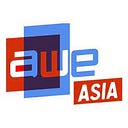In the realm of technology, few events have sparked as much anticipation and excitement as the launch of Apple’s Vision Pro. This device represents more than just a new entry in the expanding mixed reality (MR) market; it signifies a reimagining of immersive technology. Launched in early 2024, Apple has stepped into the extended reality (XR) arena, setting a new benchmark that promises to revolutionize our interaction with both the digital and physical realms. Apple describes the Vision Pro as not just an MR device, but as a spatial computing device—a bold vision of the future and a testament to Apple’s dedicated commitment to innovation. This analysis dives into Vision Pro’s groundbreaking technology, its strategic market positioning, and the challenges it introduces for the industry, showcasing its role as a catalyst for change in the technological landscape.
Launch and Market Reception
The launch of the Apple Vision Pro marked the company’s bold entrance into the mixed reality landscape. This piece of technology is not just another headset; it’s a statement of Apple’s vision for the future of computing, blending the physical and virtual worlds in ways previously unimaginable.
The device has had strong market demand since its pre-order launch on January 19, with sales reaching 200,000 units. Its demand outstripped supply, indicating strong market interest despite its premium price tag of $3,499.
Specifications That Matter
The Apple Vision Pro features an M2 chip for enhanced performance and a new R1 chip for processing inputs from 12 cameras, five sensors, and six microphones. Through the innovative visionOS system, the device supports a fully 3D interactive interface that allows users to control it through eye movements, gestures, and voice commands alone. More than just a fusion of augmented and virtual reality, the device allows users to interact with the digital world in any physical space. A 4K high-resolution display in front of each eye and external battery support allow users to enjoy an immersive experience for up to two hours.
Central to the Vision Pro’s appeal are its cutting-edge specifications. Powered by Apple’s advanced M2 chip alongside the R1 chip, the device is engineered for high-performance computing, essential for rendering complex mixed-reality environments. This technical prowess supports a suite of sensors and cameras that blend the virtual with the real, offering a seamless XR experience. The device’s outstanding resolution, field of view, and latency metrics are carefully optimized to ensure that every user interaction in the virtual world is smooth and realistic, uninterrupted by technical limitations.
Impact on the Tech Ecosystem and Beyond
Apple Vision Pro is set to significantly impact the tech ecosystem and beyond by pushing the boundaries of mixed reality (MR) technology. Its advanced hardware and software capabilities could spur innovation in content creation, user interaction, and application development. The integration of such high-level XR technology may also drive competitors to accelerate their innovations, leading to a rapid evolution in XR applications across various sectors, including education, healthcare, and entertainment. The Vision Pro’s influence could extend to fostering new startups and encouraging established companies to explore XR technologies, potentially reshaping consumer expectations and experiences in the digital world.
On the other hand, with Vision Pro’s launch, Apple’s supply chain in Asia has once again demonstrated its critical role in the tech giant’s innovative pursuits. Key components such as the front cover glass, camera lenses, and structural components are sourced from leading Asian suppliers, including Luxshare Precision, LENS Technology, and Goertek, among others. This collaboration underscores the intricate network of partnerships that Apple has cultivated across the region, showcasing the symbiotic relationship between Apple’s product innovations and the Asian manufacturing ecosystem.
Overall, the launch of the Vision Pro is set to create significant waves throughout the tech industry, sparking innovation and competition both in Asia and around the world. As developers start crafting applications designed to harness Vision Pro’s advanced capabilities, we anticipate a proliferation of innovative content and interactive experiences. Apple’s entry into the XR market demonstrates its strong belief in the future of this cutting-edge technology, and will undoubtedly accelerate the widespread adoption of XR technology in a wide range of industries and promote the rapid development of the industry ecosystem.
Challenges and Visions: Towards a New Era of Spatial Computing
Despite the promise that Vision Pro illustrates, its impact will be shaped by how Apple addresses several key challenges. The premium price tag may initially appeal only to tech enthusiasts and professionals, and there’s still a question mark over its wider accessibility and adoption. Additionally, developing a compelling library of applications will be crucial for demonstrating the device’s value beyond a novel tech gadget. Apple’s track record of ecosystem development suggests potential for success in this area, but Vision Pro’s long-term influence will depend on widespread adoption and usage.
With the introduction of Vision Pro, we are reminded of the importance of driving innovation and collaboration within the XR community. The upcoming AWE Asia 2024 in Singapore will be an event that brings together experts, enthusiasts, and innovators in the XR space. The event is designed to drive the XR industry forward, providing participants with the perfect opportunity to explore groundbreaking XR devices and cutting-edge technologies. Bringing together the industry’s best and brightest to share the latest advances in the immersive industry, AWE Asia 2024 will be a unique event for those committed to shaping a seamless future world of digital and reality.
Join us from August 26–28, 2024, at the Singapore Expo to engage with industry leaders from across the world!
